Home »
Misc »
How to play division 1 basketball
How to play division 1 basketball
Men’s NCAA Basketball Recruiting Guidelines
What skills are needed to play basketball in college? And what do college coaches look for in recruits? Whether an athlete is a perimeter player or post player, this section lays out the different requirements needed to compete at the college level, from NCAA Division 1 to JUCO programs. When student-athletes know where they fit in best, they can create a realistic list of target colleges and improve their chances of connecting with college coaches.
Quick Links
What do coaches look for in college basketball recruits?
What basketball skills are needed to play at the college level?
Elite basketball skills
Average men’s basketball player height by position and level
Men’s basketball point guard recruiting guidelines
Men’s basketball power forward recruiting guidelines
Men’s basketball center recruiting guidelines
Men’s basketball shooting guard recruiting guidelines
Men’s basketball small forward recruiting guidelines
How to get ranked in basketball
What do coaches look for in college basketball recruits?
College coaches look at a variety of factors when determining an athlete’s ability.![]() Here are the most important ones:
Here are the most important ones:
- Height and frame. The first is the most obvious: physical characteristics, like height and body frame, athleticism and strength. In NCAA Division 1 men’s basketball, the average basketball player height was just under 6’5” and the most common height listed was 6’7”. Basically, they want power players who can make an impact on the court.
- Technical ability. That being said, at the collegiate level, every athlete will be fast, athletic and strong, so coaches also thoroughly evaluate technical skills. For example, can the recruit protect the ball, or shoot with the right footwork and release point? Bottom line: coaches don’t want to bring on student-athletes who need to be taught the fundamentals.
- Basketball IQ. More importantly, coaches will determine a recruit’s “basketball IQ” and this is where position-specific skills come into play.
 Can perimeter players successfully drive the game and control the pace? Do post players read the right defensive rotations? Basketball IQ also includes situational awareness of the game. For example, if the clock is winding down and the game is tied, do athletes know to hold onto the ball until the last shot, instead of forcing a shot early? It also means being aware of how many time outs and fouls both teams have throughout the game. Players who are technically sound, can read the game and execute on the fundamentals will stand out.
Can perimeter players successfully drive the game and control the pace? Do post players read the right defensive rotations? Basketball IQ also includes situational awareness of the game. For example, if the clock is winding down and the game is tied, do athletes know to hold onto the ball until the last shot, instead of forcing a shot early? It also means being aware of how many time outs and fouls both teams have throughout the game. Players who are technically sound, can read the game and execute on the fundamentals will stand out. - Academics. Lastly, there are aspects outside of athletics that can truly set recruits apart. Academics, especially at the Division 3 level, are extremely important to college coaches. High grades and test scores speak to an athlete’s discipline, leadership ability and even time management skills.
Of course, what coaches look for also depends on their program’s specific needs. Some schools might invest more in developing a tall, athletic post player, while others highly value a smaller player who has raw talent, polished skills and strong instincts. In many cases, college coaches will turn to JUCO teams to find stronger and more developed talent compared to high school student-athletes.
Some schools might invest more in developing a tall, athletic post player, while others highly value a smaller player who has raw talent, polished skills and strong instincts. In many cases, college coaches will turn to JUCO teams to find stronger and more developed talent compared to high school student-athletes.
Establishing relationships with college coaches is the best way to fully understand their recruiting needs. But another quick way is to visit a team’s roster. Look at which athletes are graduating versus how many underclassmen are in certain positions and compare athletic history to see which positions coaches are recruiting and what key stats they look for.
Related Articles
- How many Illinois colleges have a basketball recruiting program?
- Basketball College: Offering Scholarships and On-Court Glory
- How are NCAA basketball teams organized?
What basketball skills are needed to play at the college level?
When compiling their lists of top recruits, college coaches evaluate three athletic factors: physical ability, fundamentals and basketball IQ. They seek out players who are conditioned, technically sound and have a thorough understanding of the game and strong instincts. They also want to coach athletes who have the potential to improve. That’s why playing nationally and against other high-level recruits is a popular way to gain exposure. Here is a quick overview of the types of players each division recruits:
They seek out players who are conditioned, technically sound and have a thorough understanding of the game and strong instincts. They also want to coach athletes who have the potential to improve. That’s why playing nationally and against other high-level recruits is a popular way to gain exposure. Here is a quick overview of the types of players each division recruits:
Division 1 basketball skills: These recruits are ranked nationally and are included in top lists, such as ESPN Top 150, Rivals and Scout. They have elite ball handling and defensive skills and are the best players on their high school and club teams. Simply put—they are the top recruits across the country. Typically recruited through their AAU (Amateur Athletic Union) club team, these athletes receive interest and verbal offers from college coaches early in the process during the summer after sophomore year. They’re awarded top accolades, including All-State honors, and start on varsity all four years.
Division 2 basketball skills: These players have mastered the fundamentals and are considered one of the top players on their high school and club team. They have control on the court and will continue to develop under a collegiate training program. They’ve received awards like All-Region, All-District and All-Conference. Top NCAA Division 2 programs make verbal offers to these athletes at the beginning of their junior year.
Division 3 basketball skills: These players have some club and varsity experience, earning them accolades, such as All-Area and All-Conference. They have the fundamentals nailed down and may need to continue to work on other parts of their game, whether it’s rebounding, defense, etc. A bulk of these recruits will receive offers after the summer of their junior year and into senior year.
NAIA basketball skills: These basketball recruits will look similar to some Division 2 prospects. They have varsity experience and played with a high-level club for two to three years.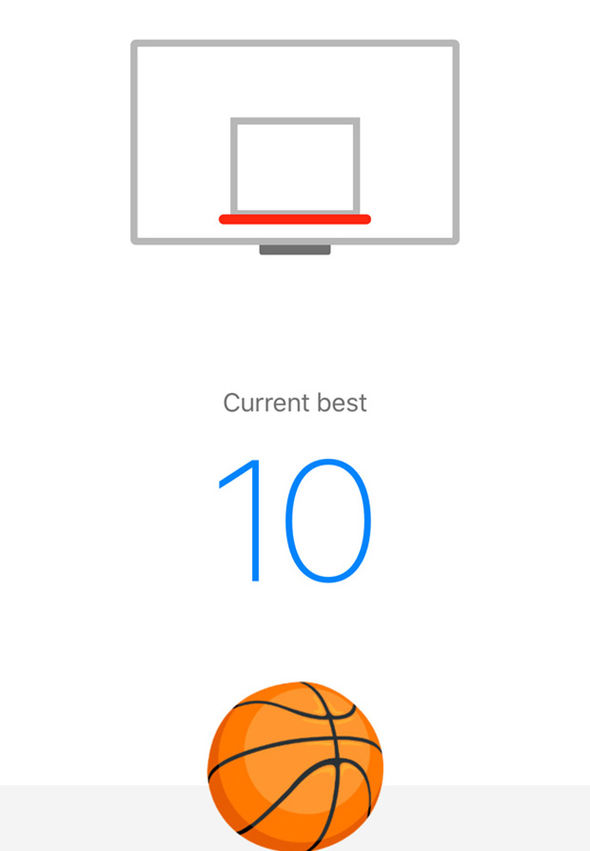 They’ve earned awards, such as All-Area and All-Conference. In a collegiate training program, they will continue to get stronger and improve their technical ability. These recruits can receive offers during their junior year and into their senior year as well.
They’ve earned awards, such as All-Area and All-Conference. In a collegiate training program, they will continue to get stronger and improve their technical ability. These recruits can receive offers during their junior year and into their senior year as well.
JUCO basketball skills: JUCO basketball prospects aim to fine tune their skills before transferring to a four-year institution. They are utility players and benefit from competing in a post high school setting. This level is a great opportunity for athletes to focus on core fundamentals, while working on getting stronger and faster, before going on to play at the highest level.
Average men’s basketball player height by position and level
| | Tier 1 | Tier 2 | Tier 3 | Tier 4 |
| Position | D1 and Top D2 | D2 and Top D3 / NAIA | D3 / NAIA | JC |
| PG | 6’2”+ | 6’1”+ | 5’10”+ | 5’9”+ |
| SG | 6’3”+ | 6’2”+ | 6’0”+ | 5’10”+ |
| SF | 6’5”+ | 6’4”+ | 6’3”+ | 6’3”+ |
| PF | 6’7”+ | 6’6”+ | 6’5”+ | 6’4”+ |
| C | 6’9” + | 6’8”+ | 6’7”+ | 6’6”+ |
Average men’s basketball player height by position
- Avg.
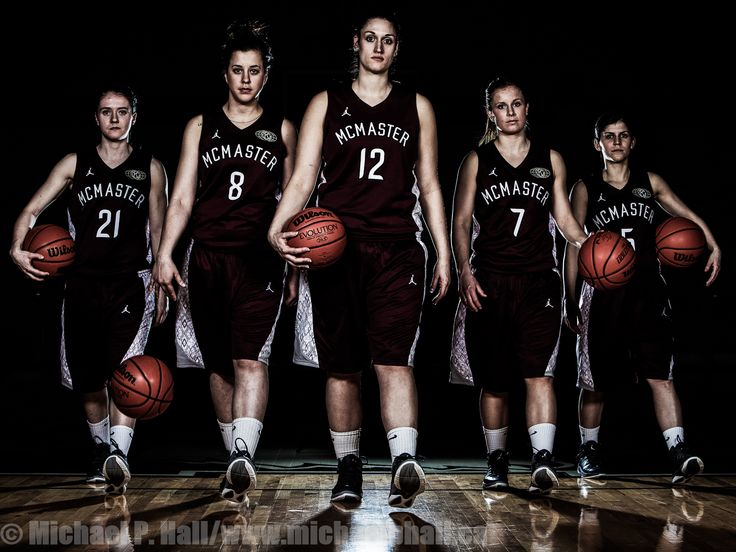 point guard height: 5’11”
point guard height: 5’11” - Avg. shooting guard height: 6’1”
- Avg. small forward height: 6’4”
- Avg. sower forward height: 6’6.5”
- Avg. center height: 6’7.5”
In NCAA Division 1 men’s basketball, the average basketball player height is just under 6’5” and the most common height listed is 6’7”.
Men’s basketball point guard recruiting guidelines
Top D1 / Top JC
- Height: 6’2”+
- Club Experience: Plays at the highest level in AAU, qualifying for national tournaments and elite events across the country. Ranks nationally on lists such as Rivals, Scout and ESPN Top 150. High profile player who is usually recruited through AAU as an underclassman.
- High School Experience: Varsity starter all four years of high school. Earned several top accolades, such as All-State, All-Region and All-Area honors.
 Best player on the team.
Best player on the team.
Low D1 / Top D2 / Top NAIA
- Height: 6’1”+
- Club Experience: Three to four years of AAU experience, playing on high level teams that compete nationally. Gets college coach exposure at club summer tournaments.
- High School Experience: Three to four years as a varsity starter, earning awards such as All-Conference and All-Region. One of the top athletes on the team.
Low D3 / Low NAIA
- Height: 5’10”+
- Club Experience: Some AAU experience playing locally, although it is not necessary.
- High School Experience: Varsity starter as an upperclassman, possibly earning some accolades such as All-Area or All-Conference.
Low D3 / Low JC
- Height: 5’9”+
- Club Experience: Some AAU experience playing locally, although it is not necessary.

- High School Experience: One to two years of varsity experience.
Men’s basketball power forward recruiting guidelines
Top D1 / Top JC
- Height: 6’7”+
- Club Experience: Plays at the highest level in AAU, qualifying for national tournaments and elite events across the country. Ranks nationally on lists such as Rivals, Scout and ESPN Top 150. High profile player who is usually recruited through AAU as an underclassman.
- High School Experience: Varsity starter all four years of high school. Earned several top accolades, such as All-State, All-Region and All-Area honors. Best player on the team.
Low D1 / Top D2 / Top NAIA
- Height: 6’6”+
- Club Experience: Three to four years of AAU experience, playing on high level teams that compete nationally. Gets college coach exposure at club summer tournaments.
- High School Experience: Three to four years as a varsity starter, earning awards such as All-Conference and All-Region.
 One of the top athletes on the team.
One of the top athletes on the team.
Low D3 / Low NAIA
- Height: 6’5”+
- Club Experience: Some AAU experience playing locally, although it is not necessary.
- High School Experience: Varsity starter as an upperclassman, possibly earning some accolades, such as All-Area or All-Conference.
Low D3 / Low JC
- Height: 6’4”+
- Club Experience: Some AAU experience playing locally, although it is not necessary.
- High School Experience: One to two years of varsity experience.
Men’s basketball center recruiting guidelines
Top D1 / Top JC
- Height: 6’9”+
- Club Experience: Plays at the highest level in AAU, qualifying for national tournaments and elite events across the country. Ranks nationally on lists such as Rivals, Scout and ESPN Top 150. High profile player who is usually recruited through AAU as an underclassman.
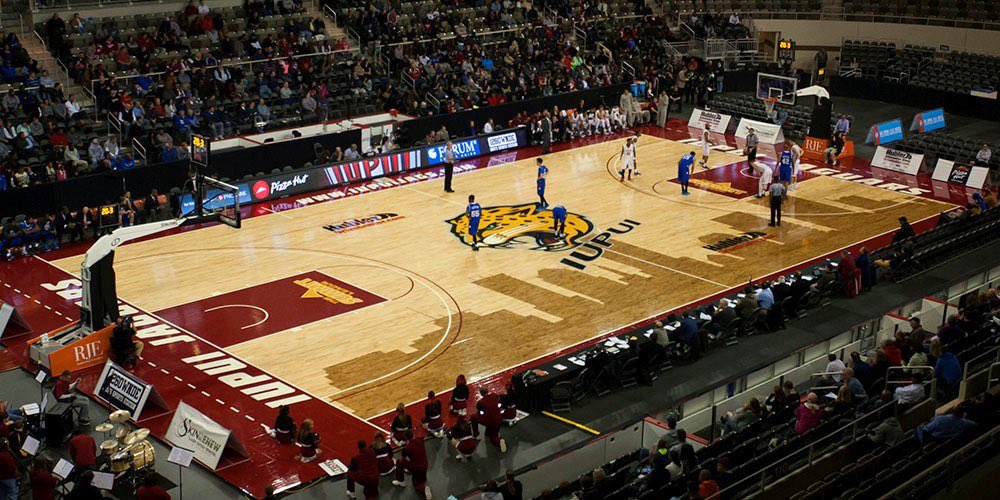
- High School Experience: Varsity starter all four years of high school. Earned several top accolades, such as All-State, All-Region, and All-Area honors. Best player on the team.
Low D1 / Top D2 / Top NAIA
- Height: 6’8”+
- Club Experience: Three to four years of AAU experience, playing on high level teams that compete nationally. Gets college coach exposure at club summer tournaments.
- High School Experience: Three to four years as a varsity starter, earning awards such as All-Conference and All-Region. One of the top athletes on the team.
Low D3 / Low NAIA
- Height: 6’7”+
- Club Experience: Some AAU experience playing locally, although it is not necessary.
- High School Experience: Varsity starter as an upperclassman, possibly earning some accolades such as All-Area or All-Conference.
Low D3 / Low JC
- Height: 6’6”+
- Club Experience: Some AAU experience playing locally, although it is not necessary.
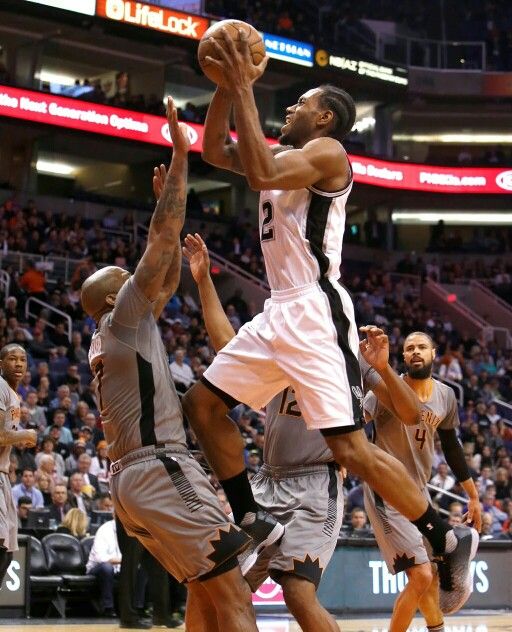
- High School Experience: One to two years of varsity experience.
Men’s basketball shooting guard recruiting guidelines
Top D1 / Top JC
- Height: 6’3”+
- Club Experience: Plays at the highest level in AAU, qualifying for national tournaments and elite events across the country. Ranks nationally on lists such as Rivals, Scout and ESPN Top 150. High profile player who is usually recruited through AAU as an underclassman.
- High School Experience: Varsity starter all four years of high school. Earned several top accolades, such as All-State, All-Region and All-Area honors. Best player on the team.
Low D1 / Top D2 / Top NAIA
- Height: 6’2”+
- Club Experience: Three to four years of AAU experience, playing on high level teams that compete nationally. Gets college coach exposure at club summer tournaments.
- High School Experience: Three to four years as a varsity starter, earning awards such as All-Conference and All-Region.
 One of the top athletes on the team.
One of the top athletes on the team.
Low D3 / Low NAIA
- Height: 6’0”+
- Club Experience: Some AAU experience playing locally, although it is not necessary.
- High School Experience: Varsity starter as an upperclassman, possibly earning some accolades such as All-Area or All-Conference.
Low D3 / Low JC
- Height: 5’10”+
- Club Experience: Some AAU experience playing locally, although it is not necessary.
- High School Experience: One to two years of varsity experience.
Men’s basketball small forward recruiting guidelines
Top D1 / Top JC
- Height: 6’5”
- Club Experience: Plays at the highest level in AAU, qualifying for national tournaments and elite events across the country. Ranks nationally on lists such as Rivals, Scout and ESPN Top 150.
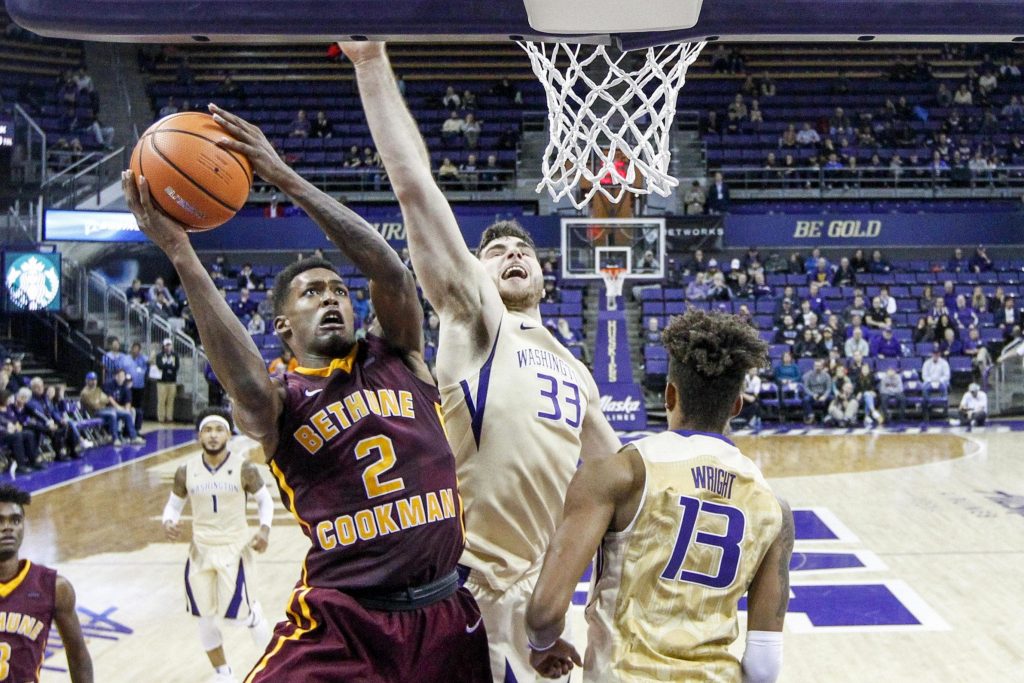 High profile player who is usually recruited through AAU as an underclassman.
High profile player who is usually recruited through AAU as an underclassman. - High School Experience: Varsity starter all four years of high school. Earned several top accolades, such as All-State, All-Region and All-Area honors. Best player on the team.
Low D1 / Top D2 / Top NAIA
- Height: 6’4”
- Club Experience: Three to four years of AAU experience, playing on high level teams that compete nationally. Gets college coach exposure at club summer tournaments.
- High School Experience: Three to four years as a varsity starter, earning awards such as All-Conference and All-Region. One of the top athletes on the team.
Low D3 / Low NAIA
- Height: 6’3”
- Club Experience: Some AAU experience playing locally, although it is not necessary.
- High School Experience: Varsity starter as an upperclassman, possibly earning some accolades such as All-Area or All-Conference.

Low D3 / Low JC
- Height: 6’3”
- Club Experience: Some AAU experience playing locally, although it is not necessary.
- High School Experience: One to two years of varsity experience.
How to get ranked in basketball
Star ratings are a quick and easy way to convey a recruit’s level of talent to college coaches. In men’s basketball, 5-star athletes are the best recruits in the country and have outstanding athleticism far beyond their peers. Prospects who are considered the best player on their club or high school team are typically considered 4-star athletes. Student-athletes who show dominance on the court but have a few areas to improve on are usually labeled as 3-star athletes. Lastly, 1- and 2-star recruits have potential to compete at the college level and after some training and development, could become reliable starters.
It’s important for recruits to gauge their level of talent so they know which programs they qualify for.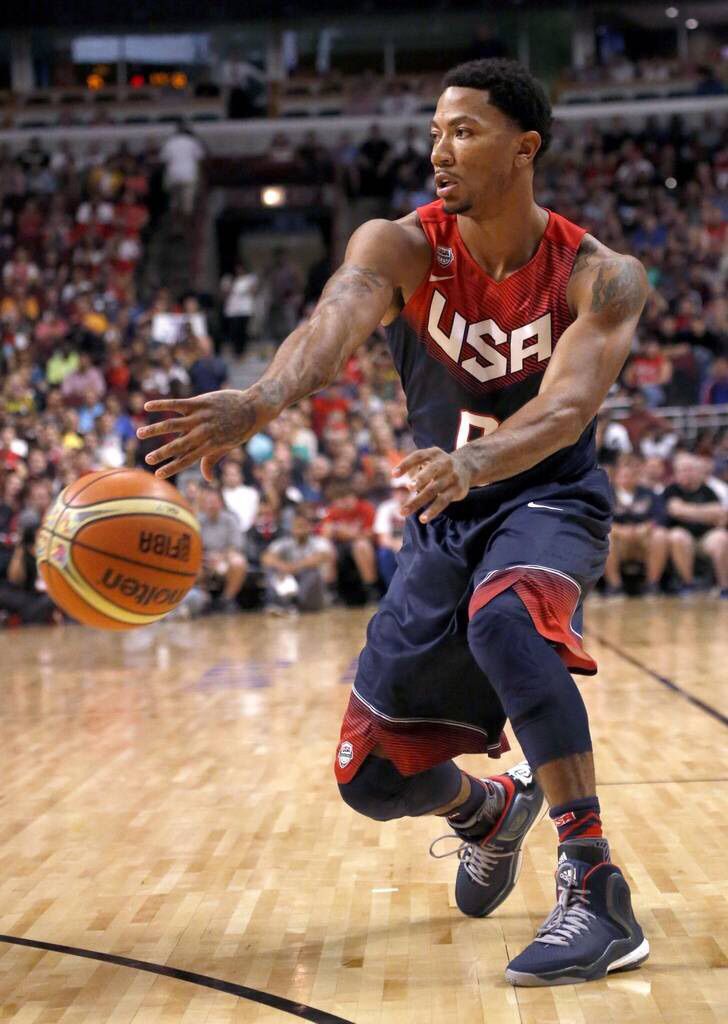 There are a couple of ways to receive a star rating. First, they can ask their high school or club coach to help assess their skill set and research college team rosters to see where their talent aligns. Another way is to have a third-party, like NCSA, use their expertise and knowledge of the college landscape to personally evaluate the recruit.
There are a couple of ways to receive a star rating. First, they can ask their high school or club coach to help assess their skill set and research college team rosters to see where their talent aligns. Another way is to have a third-party, like NCSA, use their expertise and knowledge of the college landscape to personally evaluate the recruit.
Get Started for Free!
A profile only takes 60 seconds
Athlete Information
First Name *
Last Name *
Email *
Check if you reside outside of the United States
Sport *
Select SportBaseballCheerleadingEsportsField HockeyFootballMen's BasketballMen's DivingMen's GolfMen's Ice HockeyMen's LacrosseMen's RowingMen's SoccerMen's SwimmingMen's TennisMen's TrackMen's VolleyballMen's Water PoloMen's WrestlingSoftballWomen's BasketballWomen's Beach VolleyballWomen's DivingWomen's Flag FootballWomen's GolfWomen's GymnasticsWomen's Ice HockeyWomen's LacrosseWomen's RowingWomen's SoccerWomen's SwimmingWomen's TennisWomen's TrackWomen's VolleyballWomen's Water PoloWomen's Wrestling
H. S. Grad Year *
S. Grad Year *
Select Year 2019 2020 2021 2022 2023 2024 2025 2026 2027 2028 2029 2030
Phone *
Zip Code *
Parent Information
Parent's First Name *
Parent's Last Name *
Parent's Email *
Check if you reside outside of the United States
Phone *
Get Started for Free!
A profile only takes 60 seconds
Athlete Information
Athlete's First Name *
Athlete's Last Name *
Check if you reside outside of the United States
Sport *
Select SportBaseballCheerleadingEsportsField HockeyFootballMen's BasketballMen's DivingMen's GolfMen's Ice HockeyMen's LacrosseMen's RowingMen's SoccerMen's SwimmingMen's TennisMen's TrackMen's VolleyballMen's Water PoloMen's WrestlingSoftballWomen's BasketballWomen's Beach VolleyballWomen's DivingWomen's Flag FootballWomen's GolfWomen's GymnasticsWomen's Ice HockeyWomen's LacrosseWomen's RowingWomen's SoccerWomen's SwimmingWomen's TennisWomen's TrackWomen's VolleyballWomen's Water PoloWomen's Wrestling
H.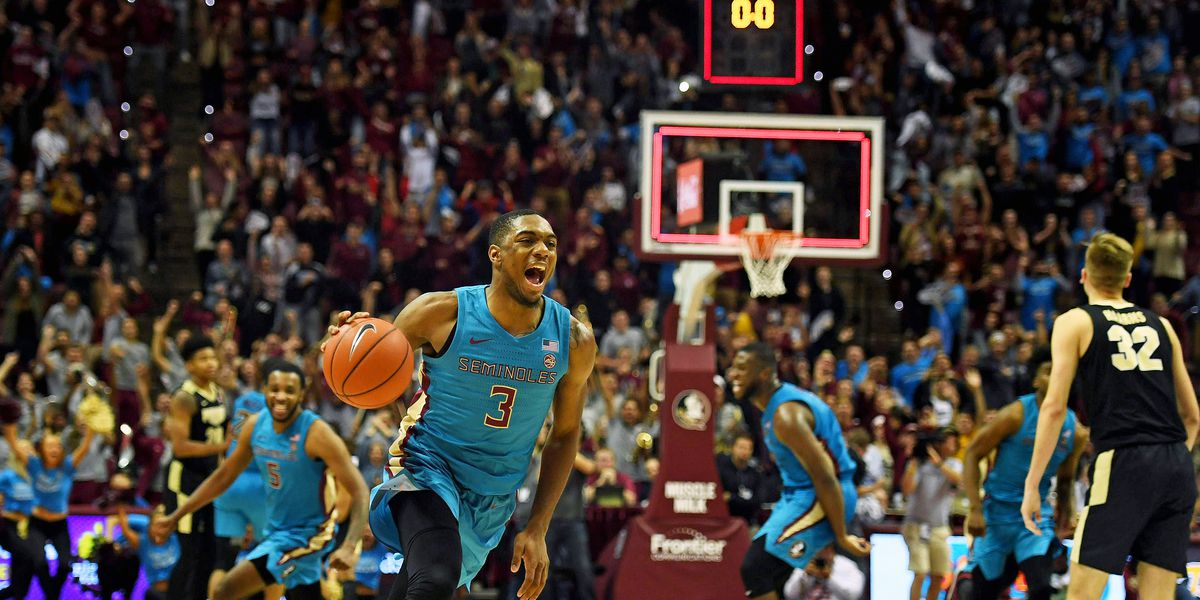 S. Grad Year *
S. Grad Year *
Select Year 2019 2020 2021 2022 2023 2024 2025 2026 2027 2028 2029 2030
Phone *
Parent Information
First Name *
Last Name *
Email *
Check if you reside outside of the United States
Phone *
Zip Code *
How to Get Recruited for College Basketball
Playing college basketball is the dream for thousands of student-athletes across the country. But many families are often unsure of how to go about getting recruited by coaches. To be successful, recruits need to research their best college fit and actively market themselves to these coaches by creating an online profile and highlight video that showcases their athletic ability and leadership qualities. This section will answer the most common questions families have on how to get recruited for college basketball.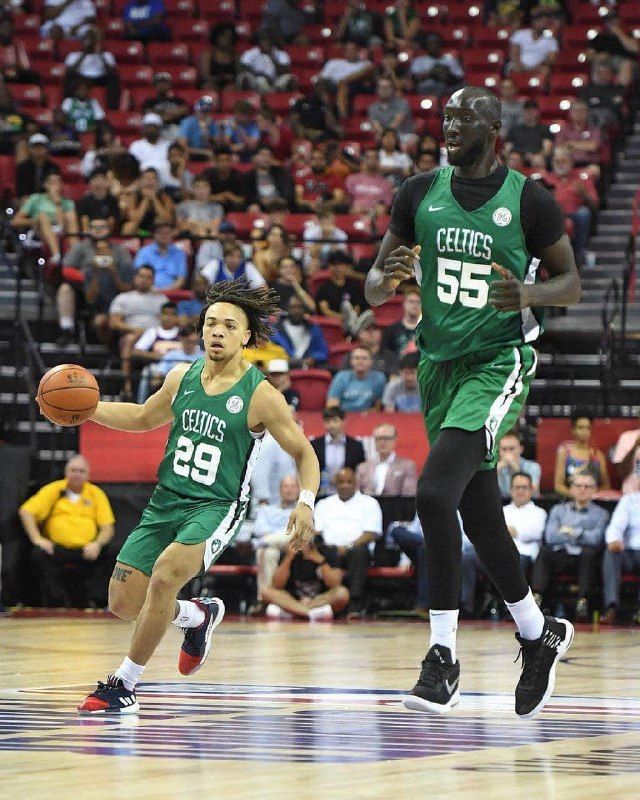
Quick Links
How does college basketball recruiting work?
How to get recruited to play college basketball
Men’s basketball recruiting timeline
What do college basketball scouts look for in recruits?
What percentage of high school basketball players play in college?
How important is club basketball?
How to join a AAU basketball team: how does AAU basketball work?
What to know about college basketball walk ons
What is a preferred walk on in college basketball?
Do college basketball teams have tryouts?
How to prepare for basketball tryouts: What coaches look for in basketball tryouts
How tall are men’s college basketball players?
Attend basketball recruiting camps
What does redshirt mean in college basketball?
Learn how to make a college recruiting video for basketball
Research schools and create your target list
Contact coaches on your target list
How your high school coach can help you in your recruiting process
How does college basketball recruiting work?
Basketball recruits who are successful in their recruiting journey do the leg work: they build a list of realistic schools, create an online profile and highlight film, contact college coaches and compete in front of coaches at tournaments and camps. From a coach’s perspective, here’s a quick overview of how they find student-athletes:
From a coach’s perspective, here’s a quick overview of how they find student-athletes:
- Identify potential recruits. At any point in high school, coaches can send general materials, such as recruiting questionnaires, to student-athletes, and they usually send them out to a large number of freshmen and sophomores to gauge their interest in the program. Respond promptly to these materials.
- Second, in-depth evaluations. At this point, coaches focus on ranking their prospects and narrowing down their list. This is the stage where most families think the recruiting process begins. However, athletes who’ve made it this far have already passed an initial evaluation and shown some interest in the school. Tournaments, camps and highlight film are the most common ways coaches evaluate basketball prospects.
- Verbal offers and visits. After coaches have their list of ranked prospects, they extend offers and lock down verbal commitments.
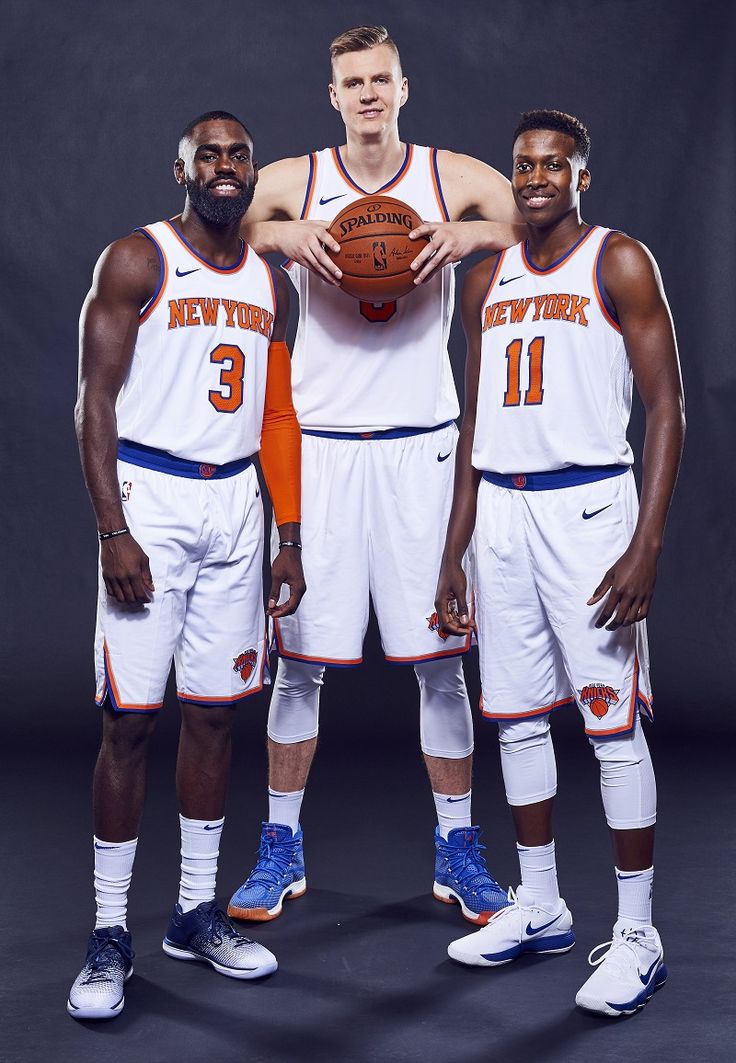 Many recruits who are being seriously recruited will partake in unofficial and official visits during their junior and senior years.
Many recruits who are being seriously recruited will partake in unofficial and official visits during their junior and senior years.
Related Articles
- What are my chances of being part of Illinois basketball recruiting?
- Basketball College: Offering Scholarships and On-Court Glory
- How are NCAA basketball teams organized?
How to get recruited to play men’s college basketball
Recruiting isn’t a linear, clear-cut process. You could be nearing the end of your conversations with one coach, while simultaneously just beginning with another. But knowing what steps you can take to create a communication strategy and market yourself will help you secure a scholarship offer.
- Research and build a target list. Student-athletes should visit college rosters and look at the players in their position (are they seniors who are graduating?), athletic stats (how do they measure up?) and backgrounds (does the coach recruit from a particular region or tournament?).
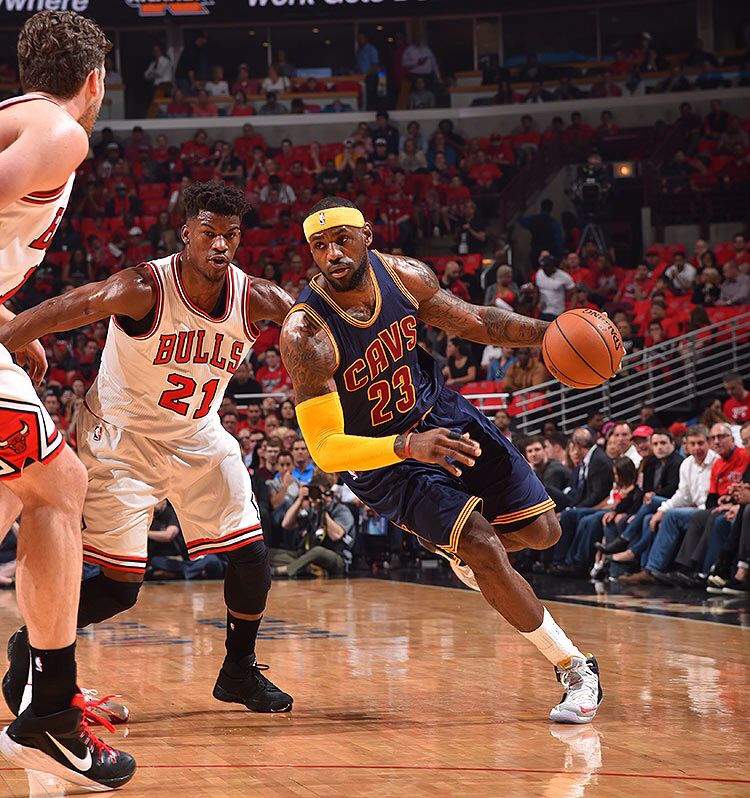
- Compete at the highest level possible: To accurately assess a recruit’s ability to compete in college, coaches want to see them play against high-ranked athletes.
- Compete in the summer during live periods: Scheduling conflicts make it difficult for college coaches to watch recruits play in-person during the regular season. So, they turn to live periods. These stretches in the offseason allow college basketball scouts and coaches to hit the road and scout several players at once. Attend elite or exposure camps as well.
- Excel academically. The NCAA Eligibility Center determines the academic eligibility and amateur status for all NCAA Division 1 and Division 2 athletes. Understand the requirements to stay on track.
- Create a highlight film. The best way to secure an in-depth and in-person evaluation is by sending coaches a highlight video and a full game film. It’s a quick way to show a snapshot of the recruit’s skill set.
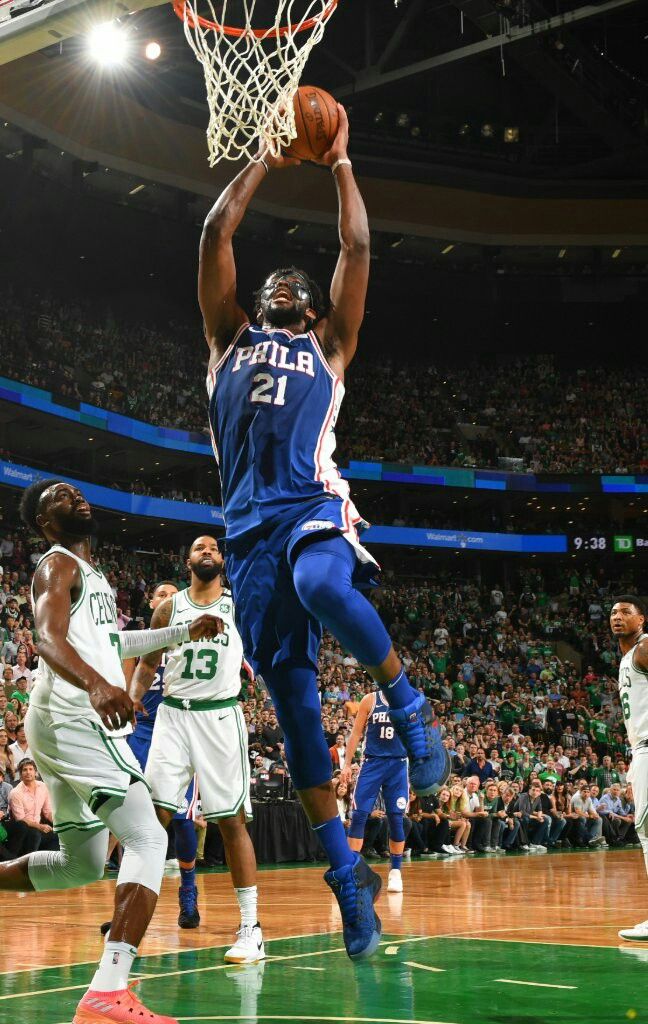
- Be proactive. Start by sending an introductory email that includes your online profile, highlight video, academic information, outstanding athletic achievements and personal interest in the program. Then follow up with a phone call.
Men’s basketball recruiting timeline broken down by year in school
Here is a general guideline you can follow year-by-year to ensure your family is on track.
Freshman year
- Fill out questionnaires online and respond to coach materials. College coaches can send recruits general materials, such as questionnaires, camp information, non-athletic information about the school and materials published by the NCAA at any time.
- Meet with your guidance counselor and set academic goals for the year to keep your academic eligibility on track.
- Research colleges from all division levels.
- Create an online profile and if you have varsity or high-level competitive film, post your highlight video.
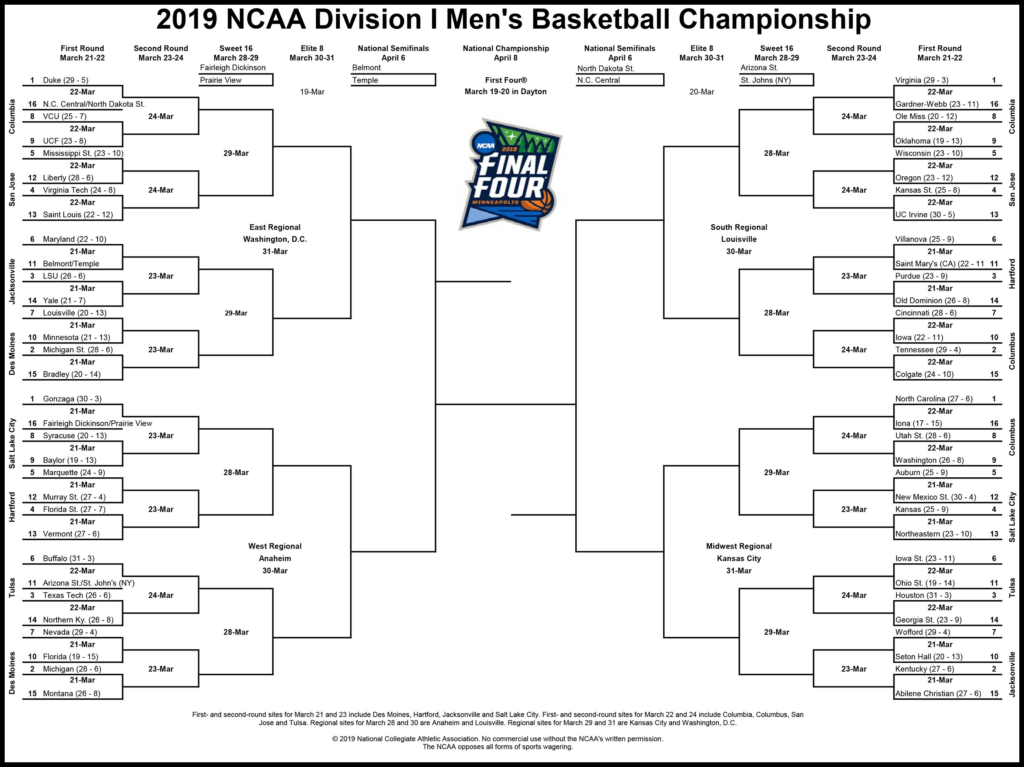
- Be proactive and call Division 1 and Division 2 coaches or athletics staff and talk to them on the phone.
Sophomore year
- Post your highlight video to your online profile, if you haven’t already.
- Aug. 1—Recruits can begin taking unofficial visits to Division 1 schools.
- Check that your sophomore year classes meet NCAA academic eligibility standards and register for the NCAA Eligibility Center.
- Send introductory emails to college coaches at your target colleges, if you haven’t already. And follow up with a phone call.
- NCAA Division 1 and Division 2— Student-athletes can receive personal contact and recruiting materials starting June 15 after their sophomore year. Coaches can call athletes, send text messages, direct messages and emails, as well as make verbal offers. Top Division 1 and Division 2 athletes are getting offers from college coaches at this time. Most Division 1 rosters are finalized before the start of junior year.

- NCAA Division 3—Off-campus contact is allowed after sophomore year.
Junior year
- Take the ACT or SAT and submit your scores to the NCAA Eligibility Center. Upload your transcript to the Eligibility Center as well.
- Update your highlight video.
- NCAA Division 1—Off-campus contact is allowed beginning your opening day of classes.
- NCAA Division 1—Official Visits are allowed Aug. 1 of your junior year through completion of junior year (5 total visits).
- NCAA Division 3—Official visits allowed starting Jan. 1 of junior year.
- Offers continue to roll in for Division 2 prospects, as well as Division 3 and NAIA athletes.
- If you’re not getting interest from coaches at the schools you’ve been contacting, take a new look at your college list and find new opportunities.
Senior year
- Update your highlight video.
- NCAA Division 1—Recruits can take an additional five official visits during their senior year.
 They may re-visit a school from a junior year official visit.
They may re-visit a school from a junior year official visit. - Nov. 13-20—Early signing period for NCAA Division 1 and Division 2 schools begins.
- Nov. 1—NJCAA Signing Date.
- Apply for the FAFSA on Oct. 1.
- Register with the NAIA Eligibility Center.
- Request final amateurism certification beginning April 1 in NCAA Eligibility Center account.
- April 15-May 20—Regular signing period occurs for Division 1 and Division 2.
- Division 3 and NAIA teams are finalizing their rosters during senior year. JUCO programs are also recruiting student-athletes at this time. Consider these schools if you haven’t secured a roster spot yet.
What do college basketball scouts look for in recruits?
College coaches consider a few factors when determining an athlete’s ability.
- Physical characteristics—height and body frame, athleticism and strength. In NCAA Division 1 men’s basketball, the average height of a college basketball player was just under 6’5” and the most common height listed was 6’7”.
-Step-5.jpg/aid43486-v4-728px-Play-21-(Basketball)-Step-5.jpg)
- Technical skills. Coaches want to recruit student-athletes who have mastered the fundamentals.
- Basketball IQ. Can the student-athlete process information in real time during a game and make the right decisions?
- Academics. College coaches look for recruits who excel in the classroom. They know that student-athletes with a solid GPA and test scores will more likely be admitted into their university and have an easier college transition. Plus, a good GPA also tells coaches that the recruit is responsible and disciplined—traits they highly value.
Of course, what coaches look for also depends on their program’s specific needs. Connecting with a college coach is the best way to understand what kind of recruit they need. Another quick way is to visit the team’s website and analyze their roster.
What percentage of high school basketball players play in college?
There are 551,373 high school men’s basketball players. Of that number, 18,540 —or 3.4 percent—go on to compete in the NCAA and less than one percent move on to the NAIA. Just less than one percent compete in NCAA Division 1 where there are 353 teams; one percent compete at the NCAA Division 2 level, which has 313 programs; and 1.4 percent compete at NCAA Division 3 with 109 teams. There are 430 JUCO programs rostering 6,352 basketball players.
Of that number, 18,540 —or 3.4 percent—go on to compete in the NCAA and less than one percent move on to the NAIA. Just less than one percent compete in NCAA Division 1 where there are 353 teams; one percent compete at the NCAA Division 2 level, which has 313 programs; and 1.4 percent compete at NCAA Division 3 with 109 teams. There are 430 JUCO programs rostering 6,352 basketball players.
How important is club basketball in the college basketball recruiting process?
AAU, which stands for the Amateur Athletic Union, can be a valuable tool in gaining exposure to college coaches. It allows recruits to compete against top tier athletes and offers coaches an extended look into their abilities. Elite Division 1 basketball players are often recognized in middle school through their AAU experience. But even though AAU provides several competitive opportunities, it isn’t a requirement to obtain a college basketball scholarship. Several prospects have foregone the AAU circuit and moved on to successful college and professional careers.
How to join a AAU basketball team. How does AAU basketball work?
AAU is a youth sports organization and stands for the Amateur Athletic Union. Athletes form independent teams and compete in AAU tournaments against other teams. Teams are assigned based on geography. To find out which district you belong to and which team is best for you, you can visit the AAU website.
Many athletes value AAU as it provides an opportunity to compete against top-level talent that you typically wouldn’t find by solely playing locally. There are various levels of competition within AAU and as players develop and get better, they’ll switch to a higher competitive team. As a result, many AAU tournaments, especially NCAA-certified tournaments, often attract scouts, giving athletes a chance to play in front of college coaches. However, participating in these events can be costly. The AAU membership fee is $14 per year, but families can end up paying $400 to $4,000 dollars per year depending on how many tournaments they travel to.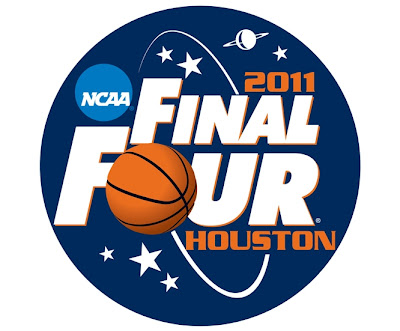 Many programs, however, offer financial assistance to help cut the high price tag associated with AAU.
Many programs, however, offer financial assistance to help cut the high price tag associated with AAU.
Do college coaches recruit at AAU or high school games? The answer is, both. But joining an AAU program and competing during the off-season gives recruits the advantage to be seen by college scouts year round. It can be difficult for college coaches to attend many high school games during the regular season because of their competing schedules. AAU tournaments provide college coaches the opportunity to evaluate many recruits at one time.
To get a membership or start a club, you can visit AAU’s website.
What to know about college basketball walk ons and how to walk onto a college basketball team
The first thing you should know about becoming a college basketball walk-on is that it is rare. Basketball rosters are not that big—there’s an average of 17 players per team across the divisions. Coaches aren’t going to give up spots to walk-ons if they don’t have to.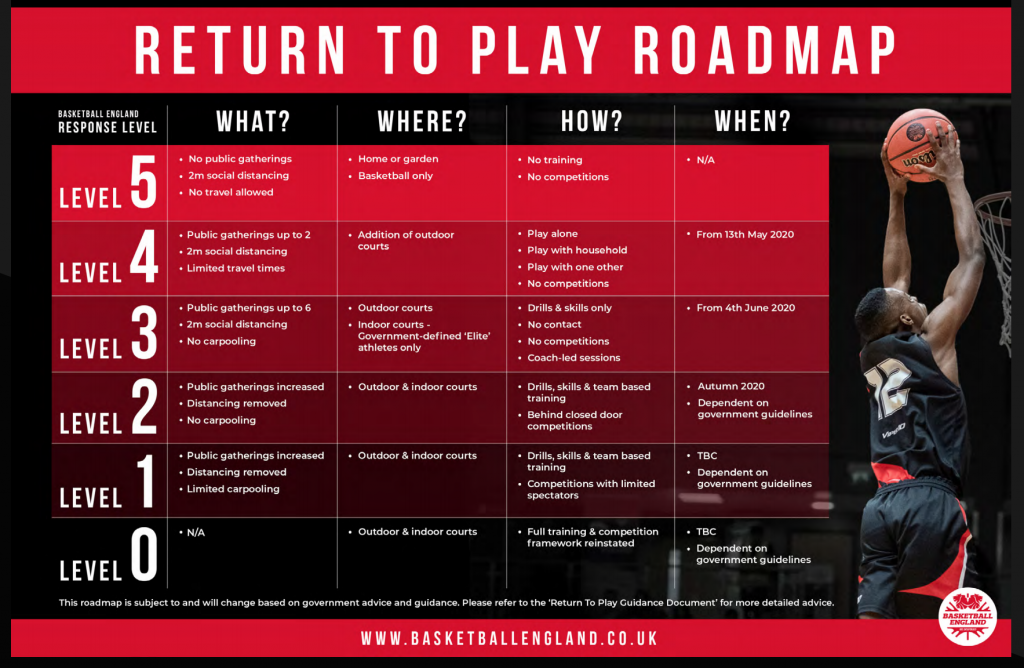 Some student-athletes, though, are recruited as a preferred walk-on. These athletes go through the recruiting process and are offered a roster spot, but they don’t receive any athletic aid as the coach doesn’t have any scholarship opportunities available.
Some student-athletes, though, are recruited as a preferred walk-on. These athletes go through the recruiting process and are offered a roster spot, but they don’t receive any athletic aid as the coach doesn’t have any scholarship opportunities available.
Student-athletes have a better chance of walking on to a college team as a preferred walk-on compared to going to a tryout and making the team. Preferred walk-ons take all the necessary steps in the recruiting process to capture a coach’s attention: they proactively contact coaches and send their online resume; they attend camps and tournaments to gain exposure; they reach out to schools that are the right academic and athletic fit for them; and they take unofficial visits to the college.
Learn more about becoming a walk-on versus getting a scholarship offer.
What is a preferred walk on in college basketball?
After college coaches have handed out all of their scholarship opportunities, they may still continue to recruit student-athletes.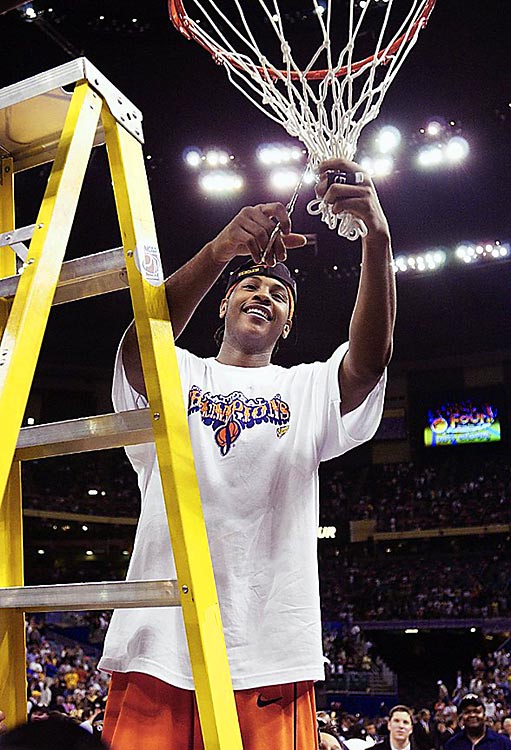 In this scenario, a student-athlete is guaranteed a roster spot without receiving any athletic aid. These are known as preferred walk-ons. The recruit still goes through the recruiting process and joins the team—the coach just doesn’t have an athletic scholarship available for them.
In this scenario, a student-athlete is guaranteed a roster spot without receiving any athletic aid. These are known as preferred walk-ons. The recruit still goes through the recruiting process and joins the team—the coach just doesn’t have an athletic scholarship available for them.
Being a preferred walk-on means something different depending on the division and program, though. In NCAA Division 1, walk-ons typically don’t see much playing time and are less likely to receive an athletic scholarship in subsequent years. At the NCAA Division 2 and JUCO levels, however, some walk-ons earn playing time and a scholarship going into their second season. It is best to have clear communication with the college coach to understand playing and scholarship opportunities.
Do college basketball teams have tryouts?
While NCAA Division 1 and Division 2 programs are allowed to conduct basketball tryouts, Division 3 cannot do so. Tryouts are limited to prospective student-athletes who are seniors in high school, junior college transfers or four-year transfers who have completed their basketball season.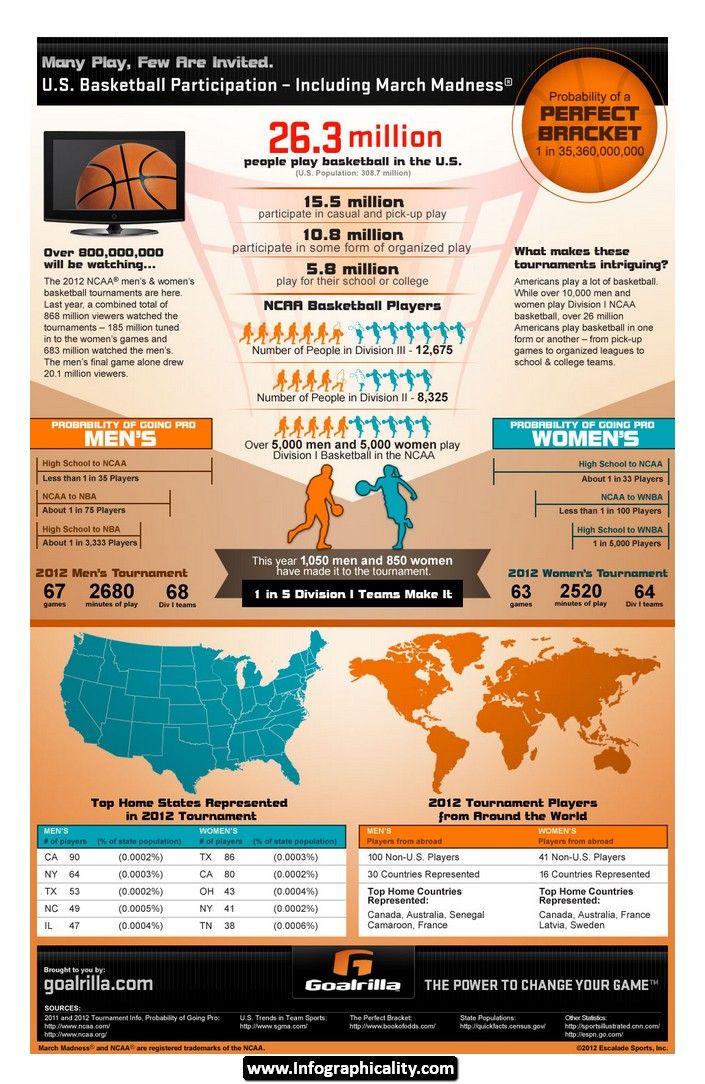 Tryout participants also must be on an official or unofficial visit to the campus.
Tryout participants also must be on an official or unofficial visit to the campus.
Typically college coaches only recruit one to two players as walk-ons. In Division 1, walk-on athletes don’t receive athletic aid and usually don’t get any playing time. Division 2 and JUCO programs more commonly give walk-ons a chance at competing for a roster spot and because these divisions offer partial scholarships, there’s also a chance to earn athletic aid after the first year.
How to prepare for basketball tryouts and what coaches look for in basketball tryouts
When making roster decisions, college coaches consider a recruit’s physical characteristics, like height and body frame, athleticism, ability to execute the fundamentals and basketball IQ, which showcases the athlete’s ability to interpret what is happening at game speed, as well as their ability to make the right decision based on instinct and experience. These players can anticipate what will happen next, making their game more automatic.
Securing a roster spot at a tryout is extremely rare. Student-athletes will improve their chances of walking on to a college team by establishing a relationship with the college coach ahead of time. Send them an introductory email with highlight film, game film, academic information, and contact information.
How tall are men’s college basketball players?
The height of men’s college basketball players vary slightly from division to division. Generally, men’s basketball players are between 5’9” and 6’9”. Keep in mind that this should be used as a helpful guideline and not something set in stone. Players who don’t fall within these ranges are recruited every year by college coaches. The best way to understand a coach’s recruiting needs is to establish a relationship with them early on and analyze their current team roster.
View the average height of men’s basketball players by position across each division level.
Attend basketball recruiting camps to get noticed by college coaches
Here are a few factors to consider when choosing the right camp:
- College basketball camps are run by the college’s basketball program.
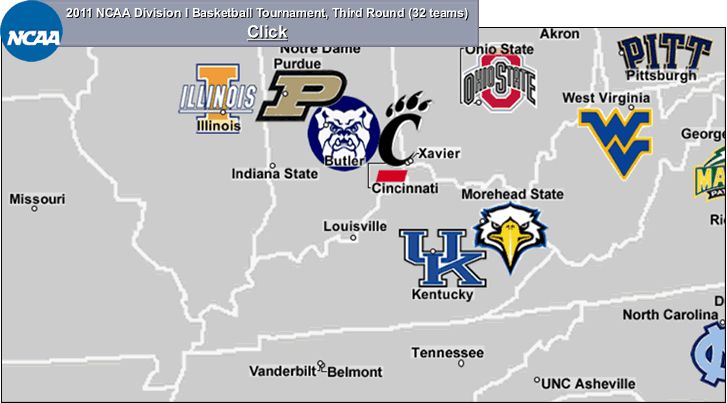 Student-athletes have an opportunity to sample campus life and compete in front of the coach.
Student-athletes have an opportunity to sample campus life and compete in front of the coach. - Basketball exposure camps are designed to evaluate players and obtain a player ranking. Although they are not tied to a specific university, many basketball exposure camps offer players an opportunity to play in front of college coaches, especially at NCAA DIII men’s basketball coaches. Many of these camps are invitation-only, so the talent level is high – and excellent for player development.
- Lastly, there is a level of “elite camps.” These are typically invitation-only events that bring together the top recruits from each graduate class to compete against each other at a national level. They’re run by college coaches on the school’s campus, so they’re a great way for athletes to get exposure to coaches.
If you want to get recruited at a college basketball camp, remember that most coaches attend events only to see players with whom they’ve already made some kind of connection.
Learn more about basketball camps and search for the best camps.
What does redshirt mean in college basketball?
The term “redshirt” is used to describe a student-athlete who does not participate in outside competition for an academic year. They’re allowed to practice and train with the team, but they don’t see any playing time. By doing this, they gain an additional year of eligibility, so technically they play four seasons in five years. Some coaches offer redshirt scholarships to freshmen who don’t meet the academic eligibility requirements coming out of high school, or as a chance to physically grow and prepare to compete as a collegiate athlete. In some cases, student-athletes redshirt for a year as they recover from an injury.
Learn how to make a college recruiting video for basketball
Creating a basketball highlight video is essential to garnering coach interest. Follow these straight-forward tips to put together a video that truly stands out:
- Choose games against your best competition, such as varsity level, high-level AAU games or any nationwide tournaments.
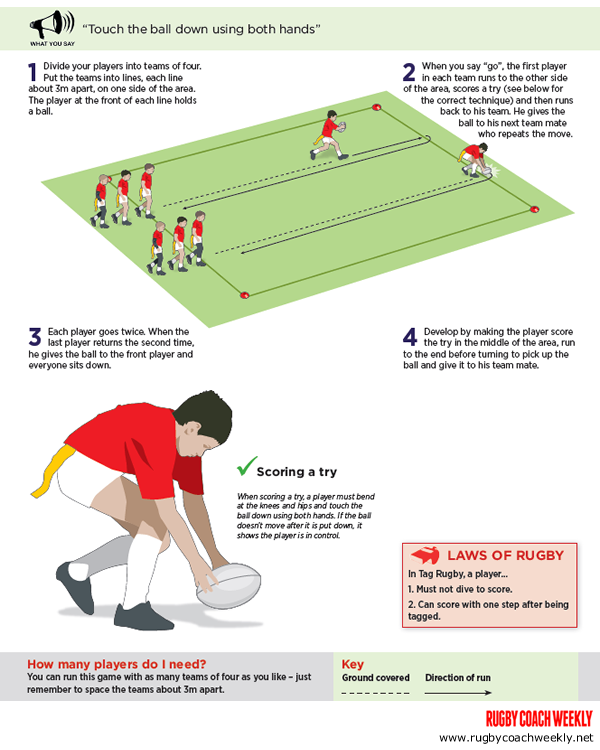
- Focus the camera from mid-court while making sure the student-athlete is easily recognizable.
- Use a tripod to avoid a shaky camera.
- Don’t zoom in and out.
- Make sure the person filming the match isn’t cheering. If there is excessive and distracting background noise, mute the video completely. Don’t add music to the video either.
- Put a title card at the front of your basketball highlight video that includes your name and graduation year, such as “John Doe Basketball Recruiting Video Class of 2021.”
- Stack your best clips first. Typically you’ll start your video by highlighting your shooting ability.
- Focus on three or four strengths and organize your clips to highlight them. For example, if you’re an excellent three-point shooter, highlighting six straight threes is much more effective than showcasing one three-pointer, a pass, then a free throw, and then maybe another three, etc.
- Know what coaches are looking for in your position.
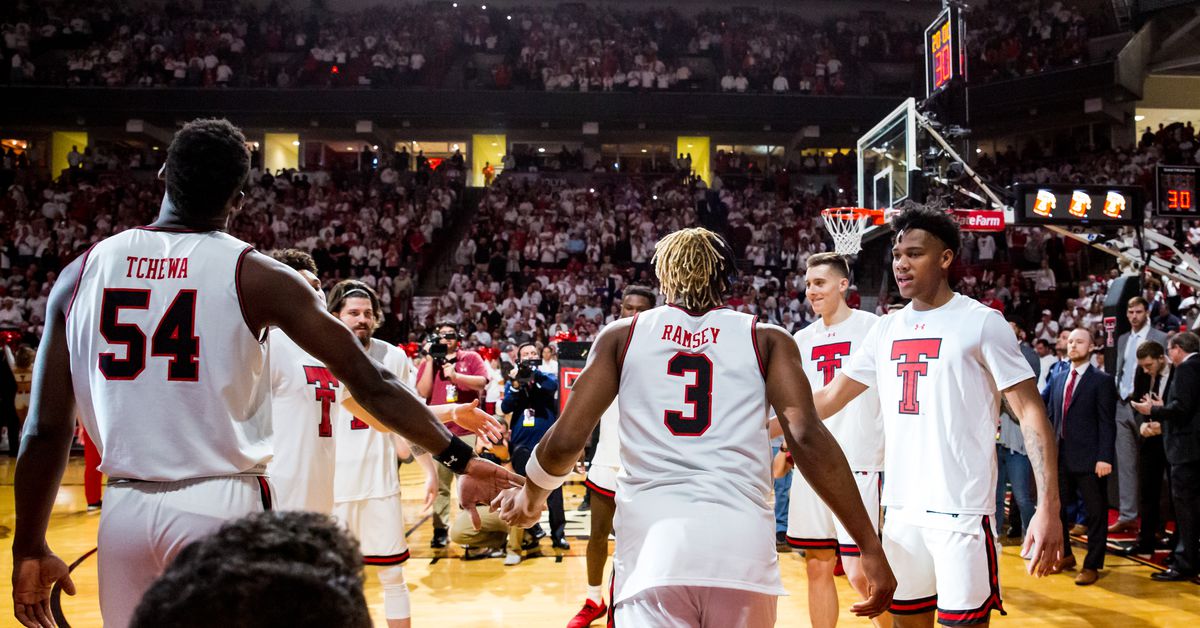 In short, post players should showcase their shooting ability, quickness, ability to finish at the rim, rebounding, shot blocking, footwork and overall basketball awareness. Perimeter players should focus on scoring ability, quickness, ability to penetrate and finish at the rim, athleticism, basketball awareness and court vision.
In short, post players should showcase their shooting ability, quickness, ability to finish at the rim, rebounding, shot blocking, footwork and overall basketball awareness. Perimeter players should focus on scoring ability, quickness, ability to penetrate and finish at the rim, athleticism, basketball awareness and court vision. - Cap your video with your best 20 to 30 clips and keep it under four minutes.
- Send college coaches your highlight video, as well as one unedited full game video. If they’re interested in a recruit after watching their highlight film, they will want to evaluate the full game next.
See the full list of tips for creating a basketball highlight video.
Research schools and create your target list
The very first step in the recruiting journey is often the one most overlooked—research. Here are the most important factors to keep in mind:
- Academics: Visit the school’s website to see the average grades and test scores.
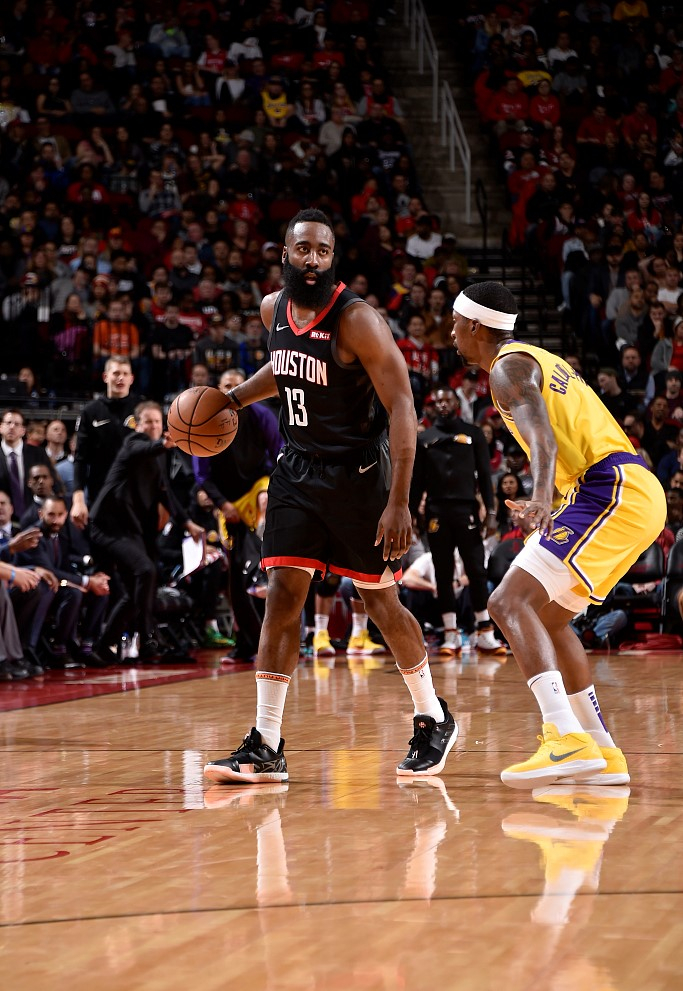 Plus, consider which majors are offered and remember to ask the coach which majors are popular among athletes on the team.
Plus, consider which majors are offered and remember to ask the coach which majors are popular among athletes on the team. - Athletics: Student-athletes can use their high school or club coach to help them assess where they can make an impact, or they can visit a team’s roster and analyze the athletes’ key stats.
- Cost: How much can your family afford and how much aid is the student-athlete eligible to receive at each school? NCAA Division 1 schools offer full ride scholarships, while Division 2, NAIA and JUCO programs offer partial scholarships. Many coaches, including NCAA Division 3, work with the admissions department to create financial packages that include need-based aid, grants, academic scholarships, work study and merit-based scholarships.
- Personal Preferences: Think about housing options, school size, social aspects, distance from home and even the weather.
As families start to find programs they’re interested in, we recommend sorting them into three categories: target schools, dream schools and safety schools.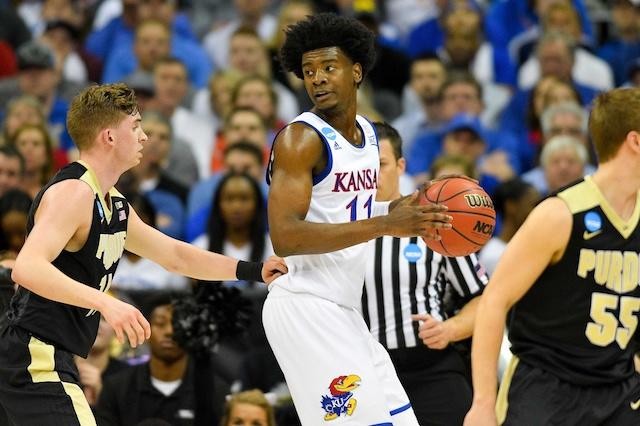 Most of the schools on a student-athlete’s list should fall into the target category.
Most of the schools on a student-athlete’s list should fall into the target category.
Get a head start on your list by viewing NCSA’s list of Best Colleges for Student-Athletes.
Contact coaches on your target list
Once a recruit has done the research and built a realistic target list of colleges, they’re ready to contact coaches. Remember—never wait for a coach to reach out. Be proactive to get on their radar. Here are a few steps to take:
- Send an introductory email: An introductory email serves two purposes—to get an initial evaluation and establish a relationship with the coach. Make sure this email includes highlight film, academic information, contact information and key stats. Student-athletes should also personalize their email and explain their interest in that specific program. Never copy and paste—it’s almost guaranteed to get skipped over.
- Tailor the subject line: Avoid generic subject lines, such as “Top basketball recruit,” and tailor the subject line to the school instead.
 For example, a recruit might want to include their GPA and test score in the subject line for high academic colleges, while highlighting key stats or awards to Division 1 schools.
For example, a recruit might want to include their GPA and test score in the subject line for high academic colleges, while highlighting key stats or awards to Division 1 schools. - Call coaches. Basketball coaches are allowed to talk to athletes on the phone when the recruits are the ones initiating contact. In other words, if a recruit calls an NCAA Division 1 coach, the coach is allowed to talk to them. Typically, they’ll want to email them letting them know what time they plan on calling so the coach can be prepared
- Follow up. Whenever there is a noteworthy update to share, like a new ACT or SAT score or athletic achievement, email the college coach again to touch base. Because if they missed the first email (and coaches tend to be pretty busy), following up can help keep you top of mind.
See the full list of tips on contacting coaches.
How your high school coach can help you in your recruiting process
High school or club coaches are there to support student-athletes along their recruiting journey—and help them connect with college coaches.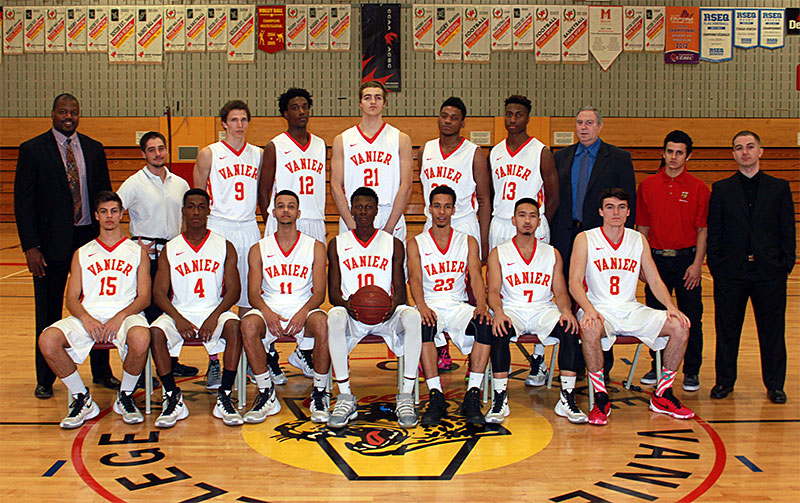 Here are a few ways:
Here are a few ways:
- Find the right college fit: Use their expertise and insight to create a college list of realistic programs. Plus, they probably have connections in the college network.
- Connect with college coaches: There’s a loophole in the NCAA basketball recruiting rules that allows student-athletes and college coaches to talk on the phone. If a student-athlete initiates the contact and calls the college coach, the coach is allowed to answer the phone and talk to the recruit. High school coaches can help facilitate this contact by acting as a liaison.
- Character reference: Men’s basketball coaches want to learn as much as they can about their top recruits, including their leadership qualities, attitude and talent. So, they call the recruit’s high school or club coach to get a better understanding of the athlete’s mental toughness, work ethic and behavior both on and off the court.
- Video help: Don’t hesitate to ask your coach for help when creating a highlight film.
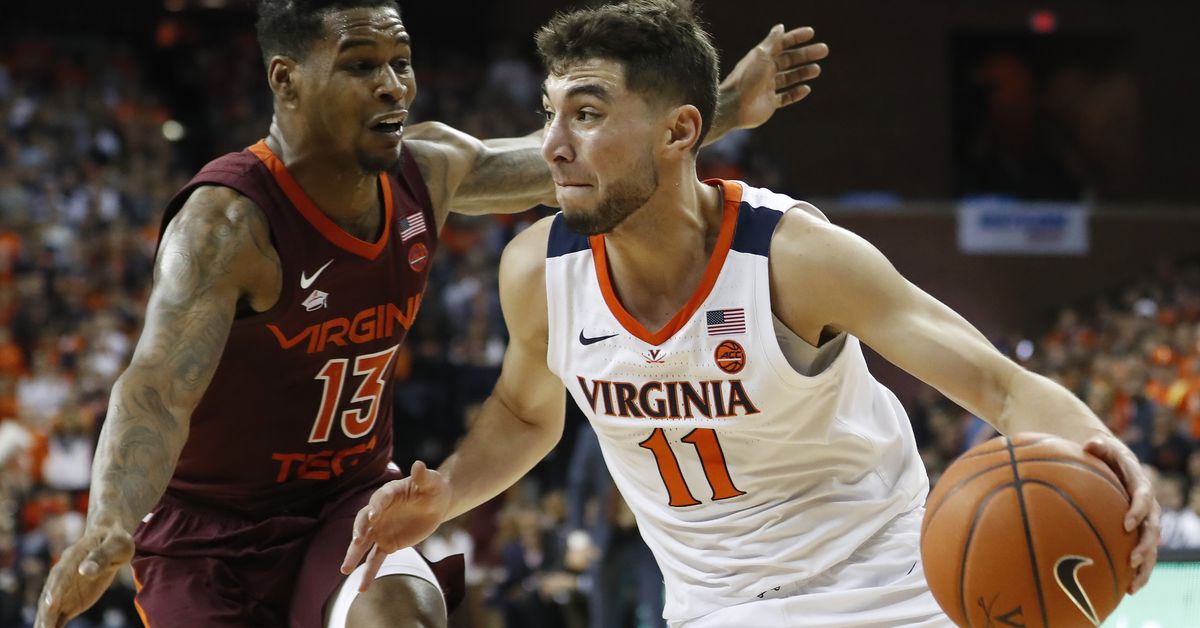 Plus, they probably have full game footage already available.
Plus, they probably have full game footage already available.
Insider tip: Despite the impact that coronavirus had on college sports, as of June 1, 2021, the NCAA resumed its regular recruiting rules and activity! Coaches are actively working to fill their rosters, so student-athletes should be proactive in reaching out to coaches. Read up on how the extra year of eligibility granted to athletes who were most affected by the pandemic in 2020 will impact future recruiting classes.
interesting, high-quality, inexpensive / MLBL-Moscow / Moscow Basketball Championship among amateur teams
When we developed the project of our dream Moscow championship 5 years ago, we wanted to combine in it all the best that can be in amateur basketball and make it's affordable. For examples, I had to turn to the experience of other cities and even countries (for example, to the experience of the Kyiv "League of Heroes"), because. in Moscow, everything was at a slightly antediluvian level, 5-6 years behind modern trends: in incomprehensible halls, with constant conflicts within the team, with judges, with officials - with everyone .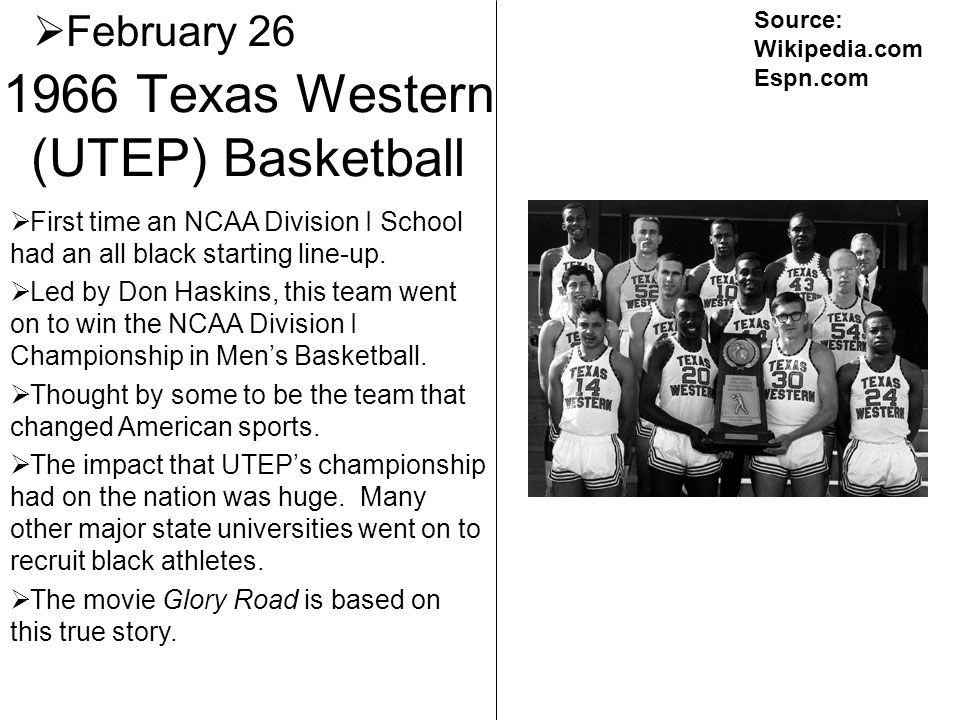 .. At the same time, it was sincerely believed that all the best is the enemy of the good. We did not agree with this, because. if you do not move forward, any project will gradually sink down, and a breakthrough in the field of amateur basketball will never happen - there will simply not be a chance.
.. At the same time, it was sincerely believed that all the best is the enemy of the good. We did not agree with this, because. if you do not move forward, any project will gradually sink down, and a breakthrough in the field of amateur basketball will never happen - there will simply not be a chance.
Before the advent of MLBL, it was believed that it was impossible to create a tournament in such high-quality conditions in Moscow, but in just 2 months we formed a full-fledged division, in which 12 very interesting and original teams of a good level play, 9 of which have their own sponsors. However, it is important for us not only the fact that the teams with sponsors, who obviously have the best conditions for attracting players (you don’t have to pay for games), supported this project, but the fact that there are teams in the second division based on the principles of player sharing. Moreover, one of these teams leads the championship! This suggests that the championship is not only well organized, but also accessible.
The “Territory of the ball” was chosen as the base for the tournament — the only hall in Moscow where our huge championship could physically fit. Now it’s even ridiculous to remember how much negativity was said about the “Territory of the Ball” and about us, that “they won’t make it”, “they won’t be able to”, etc. However, both they and we managed and succeeded, fulfilling all our promises by 100%. Now the teams that then believed in MLBL are simply enjoying the game of basketball, but we, in turn, try not to lose face.
Each team of the second division gets the best that is possible for this money: a sports complex in the center of Moscow with parquet and comfortable locker rooms and no access system, basketball on four sites at the same time - an indescribable atmosphere of a basketball event at each round, excellent refereeing (with commissioners who really work with the referees, and are not responsible for paperwork), with a high-quality and well-organized table, with a doctor at all games, who does not have to be looked for in fear of getting 20-0, with free water and excellent Spalding TF1000 balls, with online statistics and a mobile application, with the opportunity to win tickets to CSKA, or just buy them for a penny if you didn’t win (though not for such cool places), with unifying events outside the court, with photos of all matches, with video interviews of the tournament heroes , with “man of the match” magnets (a trifle, but a player is pleased to receive such a fridge magnet!), with the ability to take your fans to the games and seat them in the stands, with the ability to plan your weekends in advance, this is a tournament with a chief referee that is independent of teams, a tournament with an office and a meeting room in the Basketball House, with full-time employees working on the project, who are always ready to carefully and respectfully help resolve the issue of the team, with well-developed and adequate regulations, in which there is not a word about monetary penalties and which allows not to drag teams with terrible measures in order to force them to improve the quality of matches.
For the first time not the team, but the League is responsible for the quality of the tournament. The task of the team and players is simply to arrive at the hall at the right time with a completed technical application. For everything else, there is MLBL. This allows you to unload the heads of club leaders, who can now think more about the sports component than about organizational responsibility.
We have repeatedly voiced all these things before, but no one had the courage to put them into practice.
Another very cool decision was in the hard destruction of the stereotype that amateur clubs should only play together with doubles. This, of course, was another misconception, which was shown by the “Challengers” division. We specifically made a very mobile system that allows you to play with or without farms. This experience was supposed to show the real cost of farming. Will teams cling to them in order to realize the advantages that doubles provide over their disadvantages?
Real experience has shown that many teams deliberately uncoupled the second squads, because.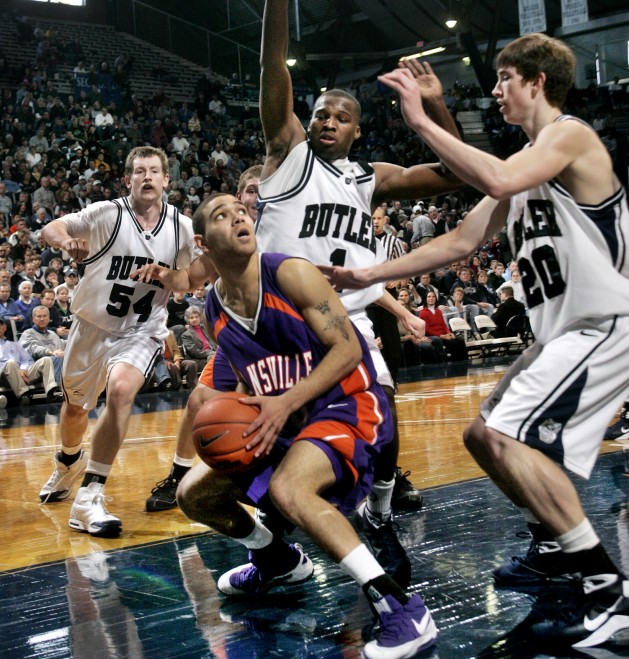 they did not want to pay for them, transferring some of the players to the general application. Those. it turned out that this was an additional financial burden that fell on the shoulders of one or several people, instead of, for example, doubling the quality of the tournament.
they did not want to pay for them, transferring some of the players to the general application. Those. it turned out that this was an additional financial burden that fell on the shoulders of one or several people, instead of, for example, doubling the quality of the tournament.
Another experience from the clubs that the farms have kept is also interesting. Only 2 out of 4 clubs used the option of transferring players from one squad to another and vice versa. This suggests that farms are a very controversial thing and it is impossible to unambiguously talk about their benefits. However, there is a third example - the Profit Basket club has already three squads in the championship.
We could also observe that the top second teams of the last MBL season are doing quite well in the confrontation with the best teams of the second division and can even claim prizes in the championship! This makes the tournament very exciting from a sporting point of view.
And, of course, the main advantage of the Contenders division is that it has become an organic link between a very cool project called the Development League and the elite division, creating a system of sports transition for the strongest teams.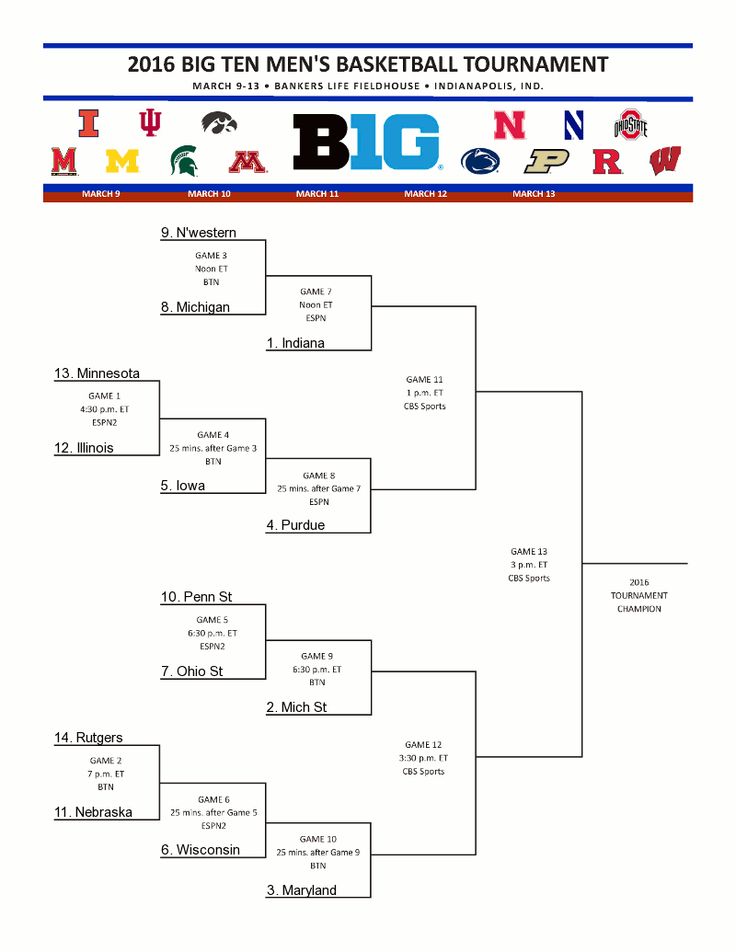 By the way, the fact that there is a sports transition does not mean that the new team should start the championship exclusively with the Development League. Any team can always apply to any division! Even a team that has been relegated from the division can try its luck to return back, providing the necessary guarantees and if there are free places or when the division expands. All this makes the system lively and mobile, capable of responding to any changes in the structure of amateur basketball in Moscow.
By the way, the fact that there is a sports transition does not mean that the new team should start the championship exclusively with the Development League. Any team can always apply to any division! Even a team that has been relegated from the division can try its luck to return back, providing the necessary guarantees and if there are free places or when the division expands. All this makes the system lively and mobile, capable of responding to any changes in the structure of amateur basketball in Moscow.
Is there a new cool club that wants to test themselves before getting into the "Elite"? Welcome to Challengers! Is there a coolest club with championship ambitions? Perhaps then you should immediately try your hand at Elite? Actually, the very name “Challengers” or, as it is fashionable to say in the NBA, “Contenders” means a pool of teams that strive to develop, strive to rise above, compete with the best teams in Moscow, and prove that they can play at this level.
And look at the line-ups - excellent players, against whom it is very difficult on the basketball court. Look at the tactics of the teams, at the attitude to what is happening on the site, at how timeouts go, listen to their conversations, look at the emotions. All this is very serious.
Look at the tactics of the teams, at the attitude to what is happening on the site, at how timeouts go, listen to their conversations, look at the emotions. All this is very serious.
Now 5 teams out of 12 are going 5-2 (Barrel, Kaspersky Lab, Vega, Megafon, Alvistoun), the seventh club (Profit Basket) has a 4-3 result. Those. The playoff zone is packed so tightly that one win can take a team from 6th to 2nd or from 12th to 8th. When you step on the court, you don't know how the game will end. There are no favorites.
Only one club, Sfera 650, goes undefeated in the Contenders - Moscow basketball beginners with 4 masters of sports. But look at the cost of these results? +5, +3, +5, +9… I.e. half of the matches the team pulled out "on the teeth".
Only Lotus goes without victories, but it is clear that with each match the team is getting angrier and angrier. Nobody should underestimate Lotus either. Otherwise, a very equal and even composition of participants.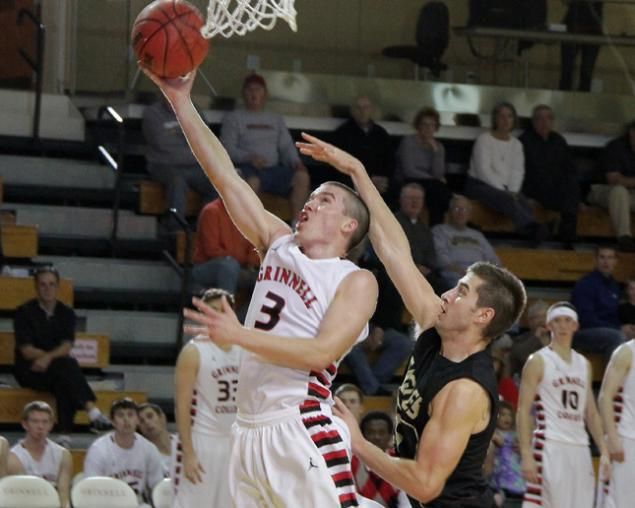 More than once there were spins when your team beat the one that beat the one you lost to. A kind of revenge and anticipation of the return match in the next round.
More than once there were spins when your team beat the one that beat the one you lost to. A kind of revenge and anticipation of the return match in the next round.
This, of course, is all very cool and a lot of fun. It's nice to come to the "Territory of the Ball" on Saturday, take the key to your locker, go to the site, where your friends are already waiting for you, and where you know everything down to the smallest detail.
At the same time, it is very pleasant to see that there are teams in the Development League that would look worthy in the second division. Plus, there are a number of good teams that have already applied for next year… Apparently, we are waiting for the expansion of the division?
However, no one is going to stop there. We got off to a pretty good start in Moscow in our first year, but we're not even close to the quality we plan to release on a regular basis. The nearest plans include a significant improvement of the site, the creation of a new version of the mobile application with tracking the results of your favorite team, the release of the first version of the application for Android, the opening of a cafe in the Ball Territory, the creation of an automatic infographic generation system and, possibly, personal websites for teams.
We would like to specially thank our partners for their help and support: free water is provided by the Vodovozkin company, the prize for winning the championship is the Youth bar, tickets to CSKA - PBK CSKA, championship T-shirts from Small And Tall , cool judges and secretaries - "Moscow Basketball Federation", hall - "Territory of the Ball", TF1000 balls from the Spalding company. Championship partners are Inanomo and Alvistoun, VTB United League, Russian Basketball Federation. Sports.ru, slamdunk.ru and We Love Basketball write about us.
Stay with us, this is only the beginning of a long journey! We all love basketball!
Equality in sport draws attention in Finland
At the Paralympic Games, athletes with physical disabilities received relatively high attention. Athletes with mental disabilities received fewer headlines, even though there is such an international forum as Special Olympics.
In Finland, where equality is highly valued, the PuHu Juniorit basketball club created in 2005 the first team that includes people with mental disabilities. Watching his cousins play, the little boy wanted to know why he couldn't play.
Watching his cousins play, the little boy wanted to know why he couldn't play.
“And we thought, but really – why? ‒ says coach Pirjo Pellikka. “There was a real need for this type of team.”
It's called unified basketball (eng. unified "united", approx. transl. ), and Pirjo Pellikka became one of its champions. In unified sports, athletes with disabilities train with partner players who do not have mental retardation. According to the Finnish Association of Athletes with Disabilities, combined classes are held in basketball, sailing, volleyball, bowling, floorball (mini bandy), equestrian sports.
Classes for everyone
Players hit the ground running for unified team PuHu Juniorit Red. Photo: ThisisFINLAND website
Today, 15 basketball clubs across Finland have unified teams with almost 400 members in total. How does it work? Three athletes and two partners from each team are on the court at the same time. Partners are not allowed to actively score points, but are allowed to score from a teammate's pass.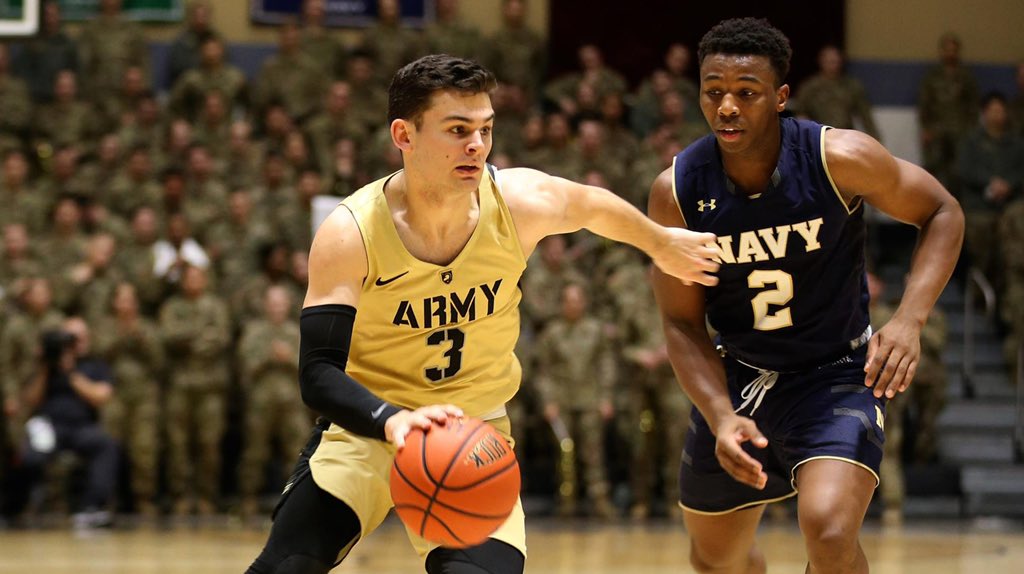
At a recent training session for the PuHu Juniorit unified team at the club's base in Vantaa, north of Helsinki, players shared their thoughts on basketball, equality, and the importance of being part of a team.
“We are not assistants on the court,” says Lotta Aaltonen, player partner and captain of the PuHu Juniorit Red unified team. “We are team members just like everyone else.”
Lotta's basketball career spans nearly three decades. She played for different teams in the Finnish first division and represented the country in the national team.
As for unified basketball, for Lotta it was “love at first sight”. The atmosphere in the team is very positive and stimulating. “The unified team brings together people with different backgrounds,” she notes. “It expanded my perspective on both basketball and life.”
Cohesiveness and good mood
You can also have fun with your friends during training, the atmosphere in the team is very positive.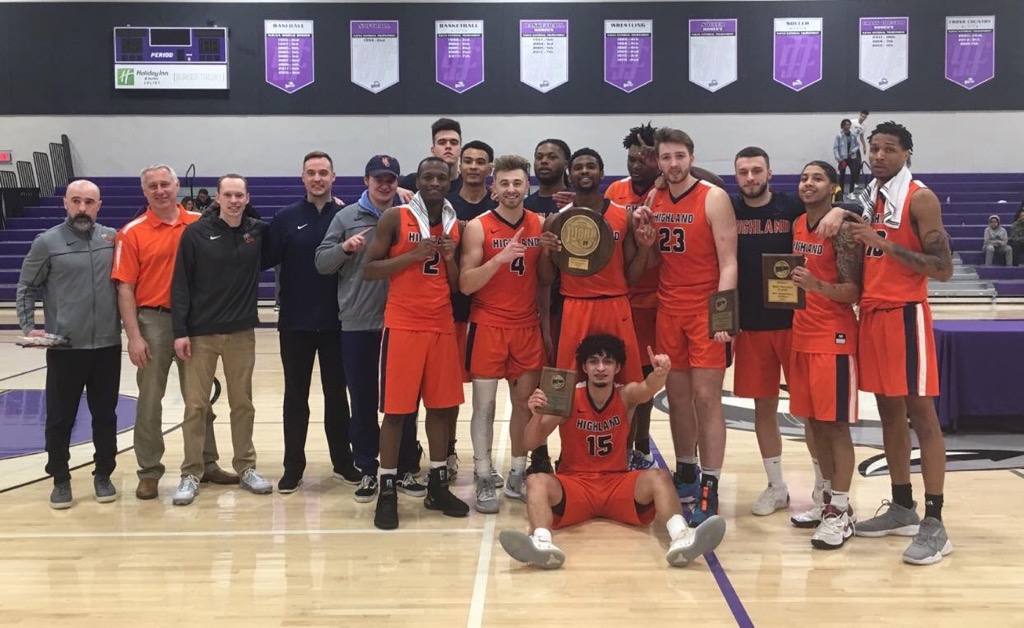 Photo: ThisisFINLAND website
Photo: ThisisFINLAND website
The second captain of the team, Teemu Salmenaho, an athlete, is also a veteran basketball player. With nearly 15 years of experience, he is deeply committed to basketball and his team. To participate in training three times a week, he travels in each direction for almost an hour.
“I think the best thing about basketball as a hobby is a good team atmosphere and sense of humor,” says Teemu.
When asked about his best basketball memory, he answers without thinking: “The 2015 Special Olympics World Cup in Los Angeles. We played in the second division and finished fourth."
Finnish unified teams know firsthand about international experience and success. At the 2019 Special Olympics in Abu Dhabi, the women's team won the tournament without losing a single match.
The main thing is not winning, but the style of play
The main thing in unified basketball is that everyone enjoys playing together. Photo: ThisisFINLAND website
Winning is always good, of course, but fame and glory are not decisive factors in a unified sport.